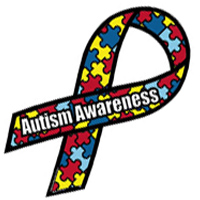HBO Autism Movie “Temple Grandin” Premieres February 6th at 8PM February 2, 2010
Posted by pta373 in Uncategorized.add a comment
On February 6th at 8PM (ET/PT), HBO will premiere an original film based on the inspirational true story of Temple Grandin, starring Claire Danes. “Temple Grandin” paints a picture of a young woman’s perseverance and determination while struggling with the isolating challenges of autism. Temple is a highly successful doctor of animal sciences, a best-selling author, and an internationally renowned autism advocate. Information related to autism and the HBO film will be displayed in all 775 Barnes & Noble stores and at bn.com/templegrandin, including a free, downloadable coloring book that tells Temple’s story through illustrations created by artists with autism. You can download the coloring book through February 17 at bn.com/templegrandin and at HBO.com.
Special Education for Children in New York State – A Parent Guide February 2, 2010
Posted by pta373 in Uncategorized.add a comment
For an excellent parent guide to Special Education for Children in New York State please link here***** ParentGuide –
also available en espanol***Guía para los padres
Free Intro to ABA and Autism Workshop – February 3, 2010 February 2, 2010
Posted by pta373 in Uncategorized.add a comment
Date: February 3rd 2010 (Walk Ins Welcomed) (also offered March 3rd and April 7 2010)
Presented by: Nicole Dibra, Co-Founder of ELIJA Foundation & ELIJA School
Time: 10am to 12pm
Fee: FREE
Location:
The ELIJA House 665 N Newbridge Rd. Levittown NY 11756
516.433.4321 (corner of Twig and Newbridge Rd.
South of Old Country Rd and North of Hemstead Turnpike – Parking available on Newbridge Rd Entrance behind building)
Learner Objectives: Attendees will learn about the core deficits of Autism, how they relate to parenting or teaching , challenges we may be up against, Basic strategies to help promote language and improve social and behavioral challenges and an introduction to the Science of Applied Behavior Analysis, Fundamental Principles, The General Functions of Behavior and how they apply to teaching children with Autism.
2009 New York City Walk Now for Autism January 29, 2009
Posted by pta373 in Uncategorized.add a comment

2009 New York City Walk Now for Autism
Join thousands of walkers on Sunday, June 14, 2009 at South Street Seaport to raise money and awareness for Autism. Walk Now for Autism is a family-friendly event so bring the whole family along. There are activities for the children, resources for families, light refreshments and entertainment. Date: 6/14/2009
For more information and to register for this event, please visit www.walknowforautism.org/nyc.
Autism Awareness Night with the NJ Nets January 29, 2009
Posted by pta373 in Uncategorized.add a comment
New Jersey Nets Awareness Night
March 8, 2009

Join us for Autism Awareness Night with the NJ Nets. Come out and watch the Nets take on the NY Knicks at the Izod Center in East Rutherford, N.J. at 6 p.m. Order your tickets TODAY via phone at 201-635-3125. Be sure to mention Autism Speaks and receive a youth XL Yi Jersey with every ticket purchase while supplies last. You can download a flier for more information.
New Jersey Devils Autism Awareness Night January 29, 2009
Posted by pta373 in Uncategorized.add a comment

New Jersey Devils Awareness Night
January 30, 2008
Join us for Autism Awareness Night as the NJ Devils take on the Pittsburgh Penguins at the Prudential Center, Newark, NJ at 7:00PM. Tickets are discounted to $50 – a $15 savings! Order yours today and use offer code: autism. You can download a flyer for more information.
Thomas & Friends Live! Special Performances for Children with Autism and Their Families January 29, 2009
Posted by pta373 in Uncategorized.add a comment

Autism Speaks is partnering with Thomas & Friends Live! On Stage: A Circus Comes to Town, to bring special performances across the country tailored to children with autism and their families. HIT Entertainment and AEG/ThemeSTAR will donate one dollar to Autism Speaks from each ticket sold for these special performances and will also offer a discount on tickets to our families. Select performances will have a quiet room.
Fri., June 19, 2009 – Newark, N.J.
Time: 7:00 p.m.
Location: Prudential Center
Quiet Room Location: TBD
Ticket Price: $15 for all seats except P1 & P2
Discount Code: AUTISM
www.ticketmaster.com
Fri., April 17, 2009 – New York, N.Y.
Time: 5:00 p.m.
Location: Beacon Theatre
Quiet Room Location: TBD
Ticket Price: $20 for all seats except P1 & P2
Discount Code: AUTISM
Autism’s cause likely linked to environment, study says January 26, 2009
Posted by pta373 in Uncategorized.add a comment
By Sandy Kleffman
It is time to focus on environmental causes for the rapid rise in autism, a leading researcher said Thursday, after her study concluded that such factors as earlier diagnosis and families moving to California cannot fully explain a dramatic seven- to eightfold increase in the state since the early 1990s.
“With no evidence of a leveling off, the possibility of a true increase in incidence deserves serious consideration,” states the study, published in the January issue of the journal Epidemiology.
Link to Rest of Article: http://www.insidebayarea.com/health/ci_11411611
Hyperbaric Chamber Rental Program – Try Before You Buy! January 26, 2009
Posted by pta373 in Uncategorized.add a comment
Hyperbaric Chamber Rental Program – Try Before You Buy!
We are not taking a position on the effectiveness of Hyperbaric Therapy on Autism. But some of our parents at PS 373R use this therapy. If you are interested, you may click the link below:
Chromosome 15 region associated with autism also linked to epilepsy January 26, 2009
Posted by pta373 in Uncategorized.add a comment
Previous work has linked the same deletion, involving at least seven genes in the 15q13.3 region, with autism, schizophrenia and mental retardation. This study is the first to link the region to idiopathic generalized epilepsy (IGE), a group of epilepsy disorders thought to have an underlying genetic basis, broadening the range of disorders associated with the deletion.
It’s not unusual to have a specific deletion lead to diverse outcomes. For example, a small region of chromosome 16 is deleted or duplicated in people with autism as well as in a small proportion of the general population.
Certain regions of chromosome 15 are prone to recombination, sometimes leading to missing or duplicated genetic material.
For instance, deletions in the 15q11-13 region can lead to neuro-developmental disorders such as Angelman and Prader-Willi syndromes, two clinically distinct disorders that share some genetic and behavioral features of autism. Duplications of the same region are also found in up to three percent of people with autism2.
In this study, researchers analyzed the genes of 1,223 people with idiopathic generalized epilepsy. They uncovered the 15q13.3 deletion in 12 people, compared with none in the 3,699 healthy controls.
“The really striking finding is that [the deletion] explains one percent of generalized epilepsy, which is huge because epilepsy is thought to be multi-factorial with many genes involved,” says Evan Eichler, professor of genome sciences at the University of Washington in Seattle who co-led the study.
“To have one single mutation, which is this deletion, in this very significant portion of individuals with generalized epilepsy was a surprise,” Eichler adds.
Diverse outcomes:
Over the past few years, studies have revealed that 15q13.3 microdeletions — dubbed ‘micro’ because they produce chromosomal changes too small to be seen under a microscope — are enriched in small subsets of people with various neuro-psychiatric conditions.
In 2006, Eichler’s group found that the 15q13 region, along with four other sites on the genome, is significantly rearranged in people with mental retardation compared with healthy controls3.
After further analysis, the researchers identified specific microdeletions in 15q13.3 in 6 of 2,082 — or 0.3 percent — people with mild to moderate mental retardation, many of whom also have seizures4.
In September 2008, two studies showed that the 15q13.3 microdeletion occurs in 0.2 to 0.3 percent of people with schizophrenia5,6.
A study published in November also linked microdeletions of 15q13.2 and 15q13.3 to autism spectrum disorder or features of autism7. In a second study published in December, researchers identified three boys with autism from one family with a 15q13.3 microdeletion8. None of the individuals with autism in either study had had seizures.
Because each study used different cohorts, diagnoses seldom overlapped across studies. In the latest study, Eichler says, there is no evidence of autism or schizophrenia in the people with the 15q13.3 microdeletion. But his group observed severe intellectual disability in 1, and mild disability in 2, of the 12 people with the microdeletion.
Given the small numbers of people who have the microdeletion, the lack of overlap in phenotypes is not surprising, says Dennis Wall, director of Harvard Medical School’s Computational Biology Initiative.
Larger studies with more detailed phenotyping may reveal whether people with the microdeletion share any behavioral or biological characteristics, he says.
But phenotyping, especially for multi-site studies, can vary widely — “enough to leave open the possibility that these 12 may or may not have other impairments that were simply missed,” Wall says.
In addition, says Susan Christian, associate professor of human genetics at the University of Chicago, there are likely to be other genetic interactions involved in the different disorders.
“The microdeletion alone will not cause a particular disease but will interact with other different mutated genes to cause the multiple disorders,” she says.
Eichler’s group is screening more individuals with idiopathic epilepsy to determine whether specific genes are involved. At least one candidate, CHRNA7, which regulates signaling between two nerve cells, has previously been implicated in a rare form of epilepsy.
![parenting11[1]](https://373asd.wordpress.com/wp-content/uploads/2010/02/parenting111.jpg?w=460)